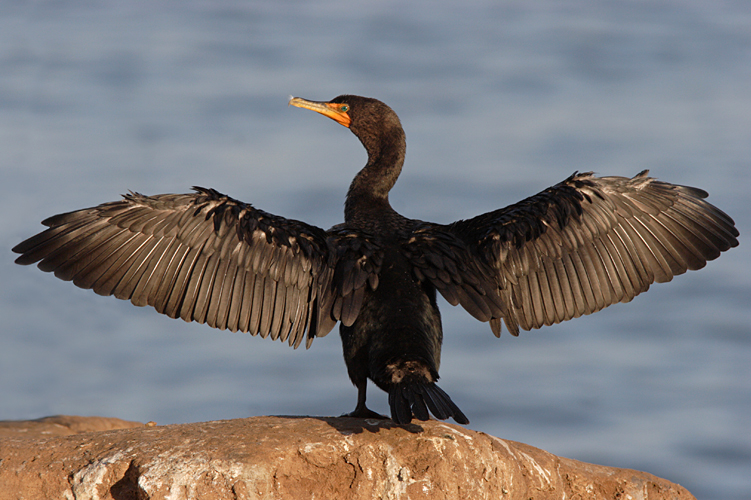
Date: 2008-01-12
Lens: Canon 300mm IS F4 + 1.4x II Converter

 Double-Crested Cormorant
Phalacrocorax auritus
Double-Crested Cormorant
Phalacrocorax auritus
 Description
DescriptionCormorants don't have well developed oil glands, so their feathers are not very waterproof. To dry off they will perch with their wings spread out. These birds dive for fish and aquatic invertebrates from the water's surface. You often see just the head and neck of the bird sticking out of the water as it swims along. Migrating cormorants fly in a large arc or wedge shaped flock, similar to geese. The cormorant's name is derived, through French, from the Latin corvus marinus, or "sea crow".
All black plumage, except during breeding when there are small white plumes on the head. Long, hooked bill. Long, thin neck. Orange lores. Chin area is squared-off and orange. Long tail. Blue-green eye. Immature birds have a pale neck and chest, and possibly pale underparts. They also have a brownish back and upperwings. Sexes similar. 10 to 13 inches in length.
Lakes, rivers, swamps, and coastal shores.
 Nesting
Nesting3-5 chalky, pale blue-green eggs with a 25-29 day incubation period. Fledging occurs 35-42 days after hatching. The nest can either be a platform of sticks or seeweed (if along the coast). It is usually built in a tree, on a cliff, or on a rocky island. These birds nest in colonies.